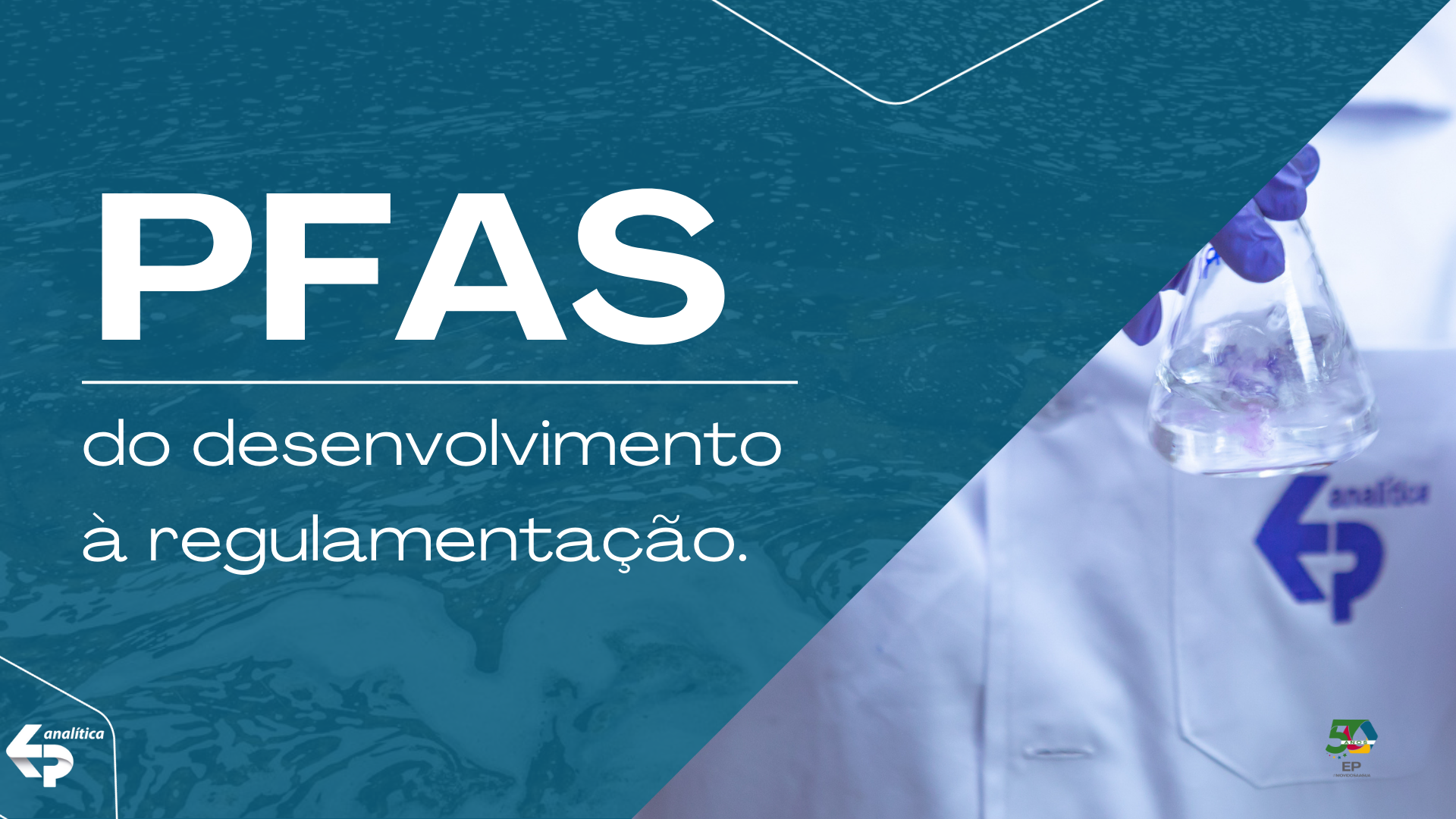The PFASknown as “eternal chemicals,” have been present in our daily lives and in a variety of products since the 1940s.
With uncontrolled and unregulated production of these substances, there have been a number of events throughout history that have led to various complications for human and animal health, as well as environmental contamination. Since these events occurred, reference limit values have been established for PFAS found in waste.
What are PFAS?
PFAS (Per- and Polyfluoroalkyl Substances) are synthetic substances that have bonds between the carbon and fluorine atoms in their structure, capable of repelling water and grease, thus creating a molecule that is highly resistant to degradation, which gives them the name “forever chemicals”.
These unique properties make PFAS essential components in applications ranging from non-stick utensils such as frying pans to essential materials in high-tech industries such as aerospace and automotive.

They are commonly found in non-stick cookware, food packaging, waterproof materials and clothing, fire-fighting foams, stain-resistant carpets, fabric or leather coatings, floor waxes, among others.
Impacts of PFAS on health and the environment
PFAS are considered to be substances that bioaccumulate, i.e. they remain in the body or the environment for years without degrading. Thus, even if an individual has a low amount of exposure to PFAS, this still becomes a cause for concern over time.
According to the National Health and Nutrition Examination Survey (NHANES), around 97% of the US population has detectable levels of PFAS in their bodies. Studies carried out over the years show that PFAS have a harmful effect on the health of humans and animals.
These effects, which range from hormonal changes to increased cancer risks, highlight the urgent need for regulation and monitoring of these substances.
Exposure to these substances can occur through direct contact with the products, through the air, through food consumed or drinking water contaminated by some type of PFAS.

The risks associated with these substances also depend on a number of factors, such as frequency, dose, duration of exposure, the body’s sensitivity and access to quality drinking water. The harmful effects on health described in some scientific studies include:
- Hormonal interference in the body;
- Increased cholesterol levels;
- Increased blood pressure during pregnancy and pre-eclampsia;
- Increased risk of developing some types of cancer, such as kidney and testicular cancer;
- Changes in liver enzymes;
- Increased risk for fetuses, such as low birth weight;
- Decreased antibody response to some types of vaccine.
The history of PFAS
The history of PFAS begins in 1934, when Fritz Schloffer and Otto Scherer discovered PCTFE (Polychlorotrifluoroethylene) in an old German chemical conglomerate. Years later, scientists from the DuPont company accidentally discovered a new substance that was named Polytetrafluoroethylene (PTFE) and registered as Teflon. Because it was considered a difficult substance to handle, a new substance called Perfluorooctanoic Acid (PFOA) was discovered by the company 3M.
PFOAs were used as a coating, just like Teflon, but they didn’t agglomerate during production, increasing productivity on a commercial scale. In 1951, DuPont, which was aiming to set up Teflon production on a commercial scale, started buying PFOA from 3M. This substance was not classified as hazardous, but disposal recommendations were sent out, stating that the proper disposal of this substance should be done through incineration or sent to chemical waste facilities, and could not be disposed of in surface water or sewers.
For years, the companies DuPont and 3M carried out various scientific studies to understand the real level of toxicity of these substances. The research was carried out on laboratory animals and then on company employees who handled these substances.
In the course of the research, various alterations in the body were identified, such as an increase in the size of the liver, congenital problems for fetuses, as well as some types of cancer. All of these studies remained confidential to the company and only came to light when residents of the Parkersburg area in West Virginia filed a lawsuit against DuPont after several cattle in the area died without any apparent cause.
Environmental consequences and regulation
It was investigated that, for years, DuPont disposed of sludge mixed with PFOAs in open pits without proper lining, totaling about 7,100 tons of improperly disposed waste, which consequently led to a chemical leak into the soil and groundwater, causing contamination of the drinking water supply for the residents of that region, as well as contamination of the Ohio River.

After the events involving DuPont and 3M, regulatory bodies began to implement standards for the use of PFAS and reference limit values for these substances in waste. According to the Stockholm Convention, PFAS are called Persistent Organic Pollutants (POPs), described as organic chemical substances that have toxic properties resistant to decomposition.
ABNT NBR 10.004 underwent a public consultation at the beginning of the year and stipulates the reference limit value for the disposal of PFOS (Perfluoro-octanesulfonic acid) and its derivatives is 50 mg/kg, and for the substances PFOA (Perfluoro-octanoic acid) and PFHxS (Perfluoro-hexanesulfonic acid) and their derivatives, 40 mg/kg. In addition, the EPA method ( U.S. Environmental Protection Agency) 1633, which describes the determination of PFAS in aqueous, solid and tissue samples by Liquid Chromatography/Mass Spectrometry (LC-MS/MS), and complies with the Clean Water Act (CWA), which establishes the basic structures for the discharge of pollutants into water.
As mentioned earlier, ABNT NBR 10.004 is being revised to include PFAS parameters here in Brazil. In addition to this project, we have Bill PL2726/2023, which establishes a national PFAS control policy.
Count on EP for PFAS solutions
Legislation is evolving in response to increasingly in-depth studies on PFAS and their toxicity to humans and the environment. This regulatory evolution is crucial to ensure that industries dispose of these compounds properly, respecting the limits established by law and ensuring public health and environmental protection.
A Analytical EPAs an accredited laboratory, we are fully qualified to carry out environmental analyses of PFAS. We have a highly trained technical team, as well as advanced equipment and methods, which guarantee the integrity of the results and strict compliance with current legislation.

In addition to providing analytical services for the identification of these compounds, EP also has a Research, Development and Innovation (RD&I) department. Research, Development and Innovation (RD&I) department, dedicated to the study and development of processes and systems for the treatment of effluents and water contaminated with PFAS.
If your company is facing PFAS-related challenges and is looking to comply with ESG policies effectively, please contact us. Our integrated solutions are designed to solve your specific needs while ensuring compliance and sustainability. After all, taking care of the environment and society’s quality of life is our mission.
_________________________________________________________________________
And to further understand the importance of this topic, we suggest watching the movie The Price of Truth (Dark Waters), which paints an impactful portrait of the consequences of these substances for health and the environment.
Article by: Catharina Mariusso and Leonardo Paiva

